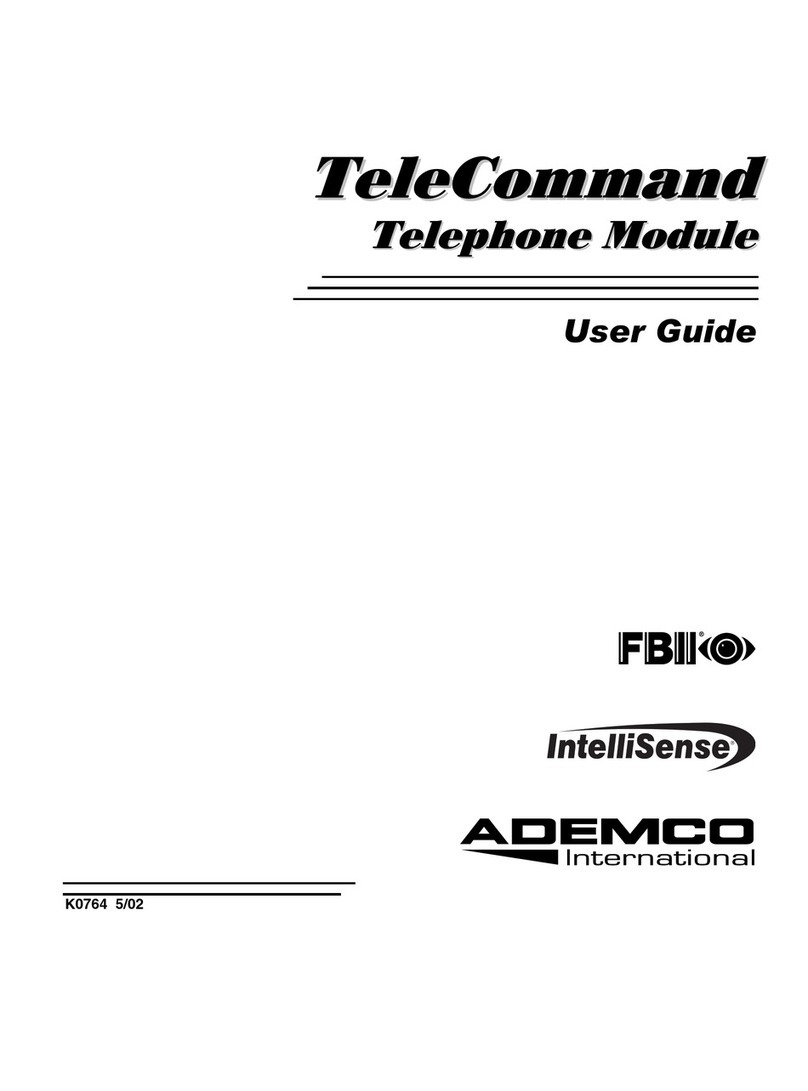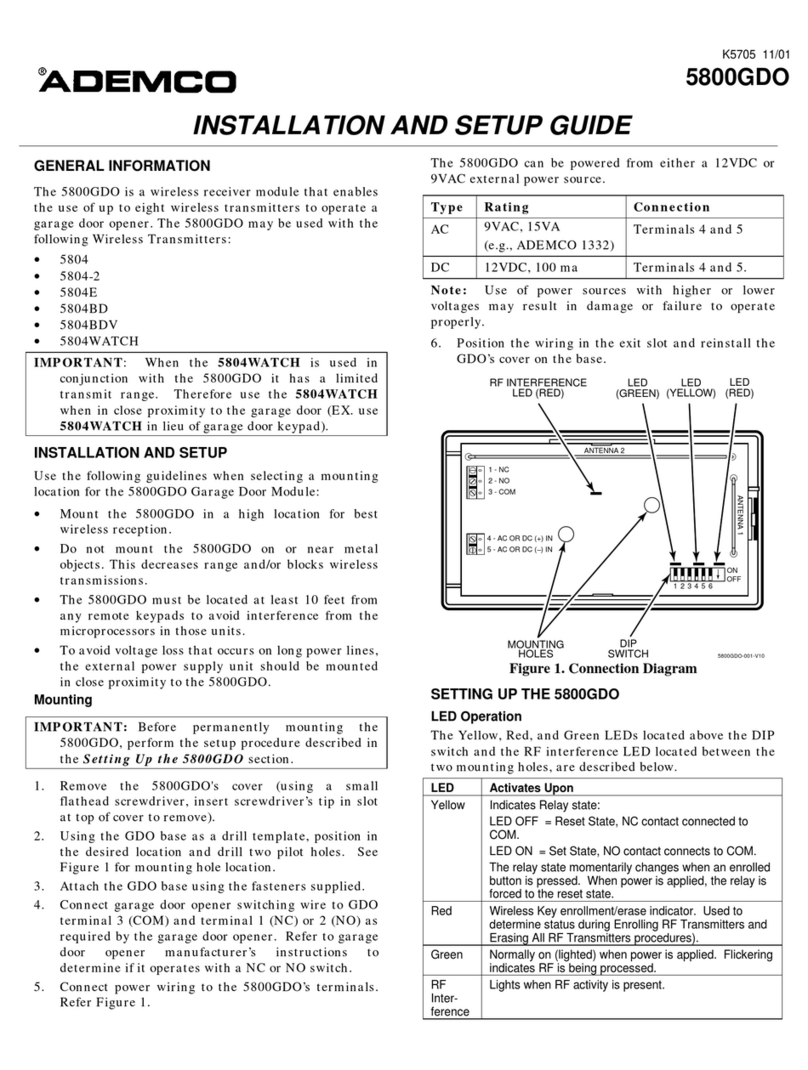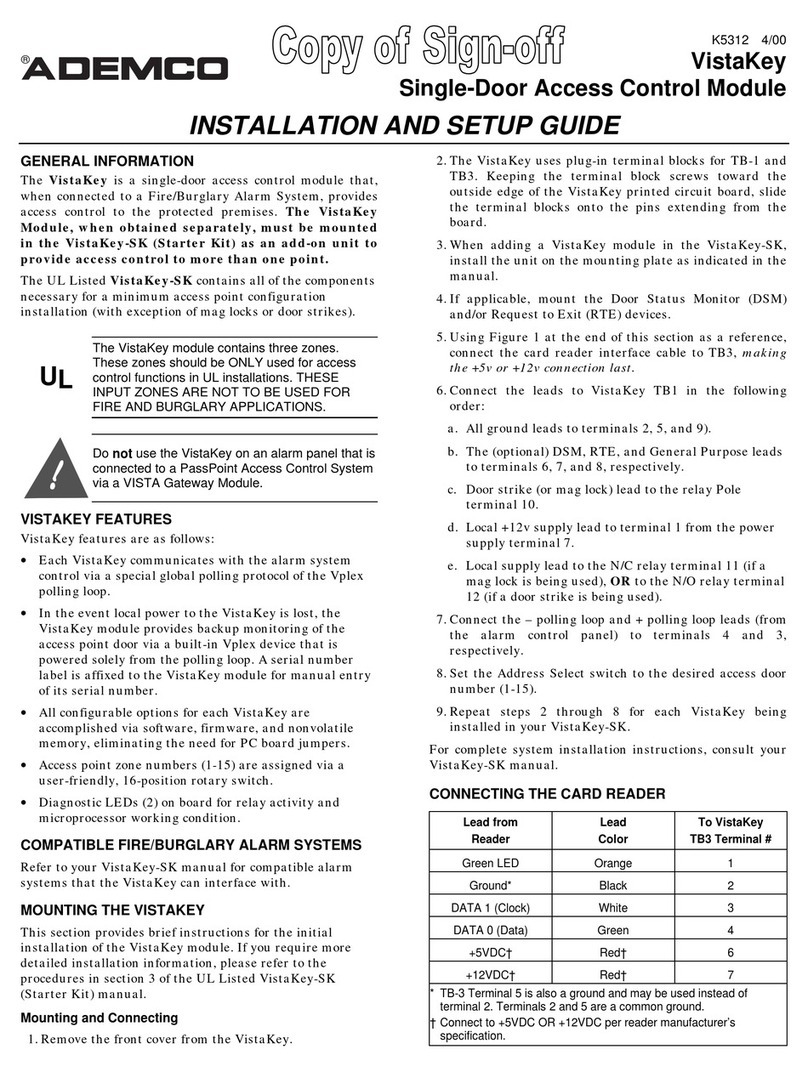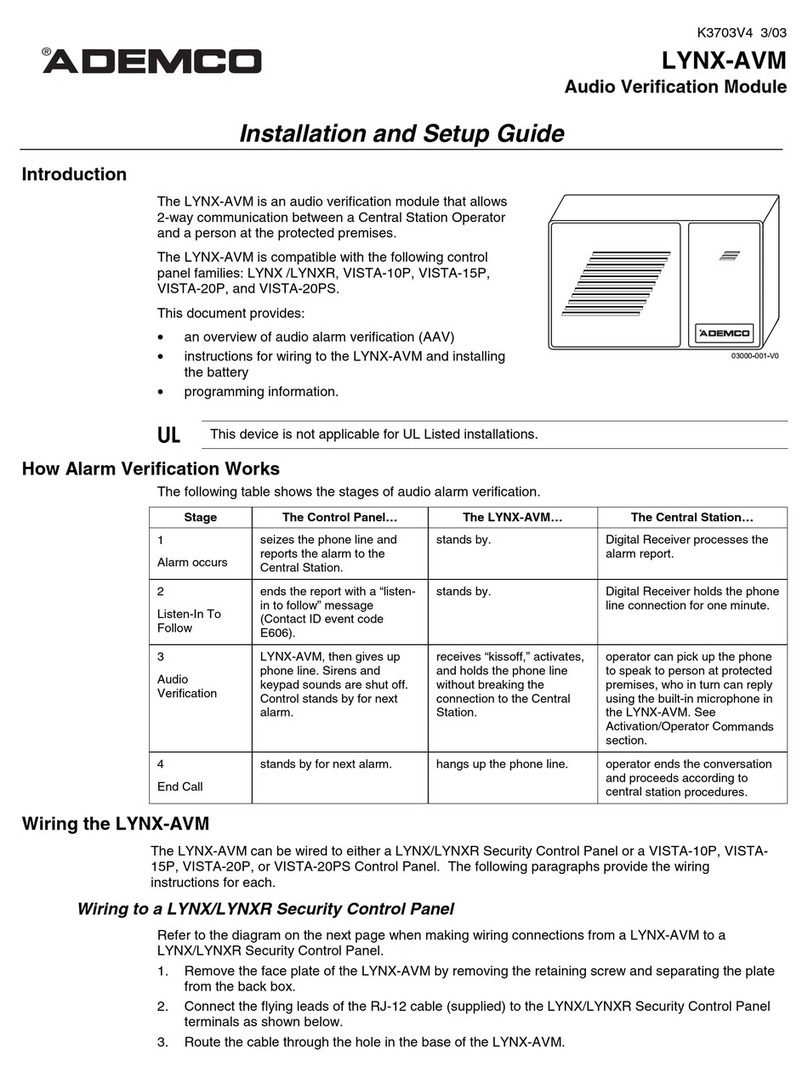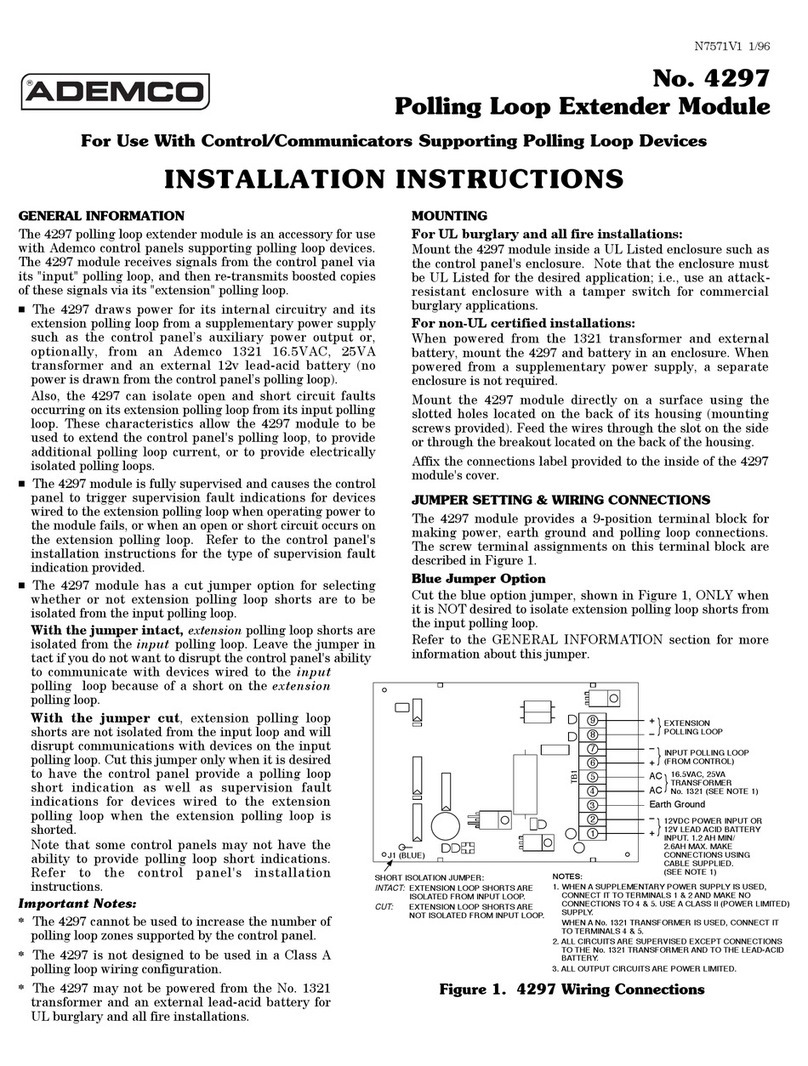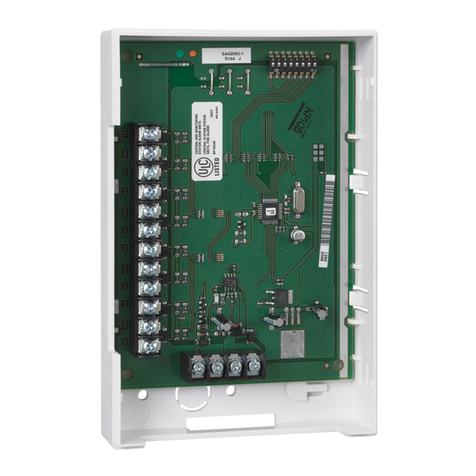
111. (B) SYSTEM CONFIGURATION (PERIPHERALS)
—REMOTE CONSOLES —
GENERAL
Both the 4130XM and the 5130XM supply up to
280mA (200mA for UL certificated installations) of
auxiliary power for remote consoles and/or other
auxiliary devices such as motion detectors or 4-
wire smoke detectors. The 4140XM supplies up to
700mA for non-UL usage and up to 400mA for UL
applications. You must keep this in mind when
adding remote consoles so you dorm over-draw
current from the panel. This would result in a
battery which is never fully charged, or possibly a
blown auxiliary power fuse. Up to 7remote
consolescan be used.
In the event you need more than the allowed number
of remote consoles, you can use asecond 1350
power pack to power up to 7extra 4137s/5137s.
Instead of using the panef’s auxiliary power
connection to the red and black console lead,
connect the Positive (+) terminai of the 1350 to the
biue console fead, and the Negative (-) to the black
iead. As iong as AC power is present these extra
consoles are active. If AC is lost, the system’s
back-up battery will take over and oniy the
consoles powered from auxiliary power wiii be
active.
—SMOKE DETECTOR
ZONE 1
When programmedas an EOLR supervisedFiRE zone
(type 09 in program field “02), up to three 2-wire
smoke detectors can be used. Recommended are the
BRK1400 Ionization detector, 2400 Photoeiectnc
smoke detector, and the 2400TH Photoelectric
smoke detector with 135°F heat sensor.
ADVISORY
ifthe EOLRianot attheendofthe loop, the zoneis
not fully supervised. The system wiil not respond
to an open circuit within the zone.
ZONES 2THROUGH 8
These zones can support as many 4-wire smoke
detectors as can be powered, when programmed as
aFIRE zone, type 09, in program fwld “02. There
are only two requirements: (1) The zones must be
configured for EOLR supervision, and (2) A
normally-closed, momentary switch must be
inatalied in series with the power to the detectors
in order to allow reset of the smoke detectors after
an aiarm. The detectors must be wired in parallel,
with the EOLR at the last detector for fuil
supewision.
NOTE If using a4140XM, make sure you power
at least one remote console from auxiliary power,
othenviee there wouid be no means of controlling
the panel duringan AC ioas.
4137
-For use with the 4130XM, 4140XM or 5130XM
Controls
-60 mA current draw
-Power up to 7consoles from the 4140XM.(non-UL)
5137
.For use with the 4140XM or 5130XM Controls
-60 mA current draw standby
-90 mA current draw with backlighting
-Power up to 7consoles from the 4140XM (non-UL)
CONFIGURATIONS —
POLLING LOOP SMOKE DETECTORS
(4192SD, 4192SDT or 4192CP)
Can be added to the 2-wire Poiling Loop via the
4152LMB ioop module, on zones 10 through 64 (as
programmed in fields “03, “04, “05, 1●O1,
1“02, 1’03, 1●O4 and 1“05). These detectors
have abuilt-in RPM which is DIP switch
programmable. They are wired in paraliel to the
poiiing loop, and do not need auxiliary power or a
separate reset switch. The polling loop provides
power and reset signals to the detectors, as well as
alarm and trouble signals from the detectors. Refer
to the poiling loop wire run iength tabie in the
PoilingLoop Expansion3ection.
WIRELESS SMOKE DETECTOR
(5706)
Up to 8smoke detectorscan be used and assignedto
zonea 48-55 as long as these zones are enabled for
RF usage and are programmed as Fire zones (type
09). A4280 RF Receiver must be connected to the
poliing ioop to support the wireiess smoke
detectors. Refer to the instructions provided with
the 4280 for installation information.
-8-
